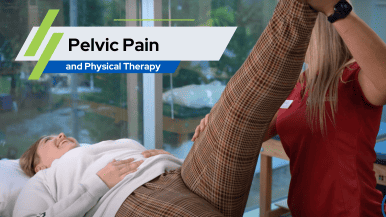How to Manage Shoulder Impingement and Other Rotator Cuff-Related Issues
The rotator cuff is the group of tendons and muscles in the shoulder which hold the shoulder joint in place and allow you to move your arm and shoulder. A rotator cuff that becomes irritated or damaged may need surgical repair and/or occupational therapy. One of the most common injuries is shoulder impingement.
Whether you’ve recently had surgery or are trying to avoid rotator cuff surgery, physical therapy may help. The physical therapist at Ability Rehabilitation provide treatments including exercise, functional training, manual therapy techniques and adaptive devices and equipment, and physical agents and electrotherapeutic modalities.
“Early goals of postoperative physical therapy is to restore range of motion in a passive manner. The physical therapist will help the patient move their arm [gently and safely], as the tendon is healing,” says David P. Whitaker, a physical therapist at Ability Rehabilitation. “As the tendon continues to heal, the therapy will progress into an active assisted motion program. An active assisted motion program is where the patient will start doing gentle activation of the muscles themselves. Then the therapy will advance into an active range of motion.”
 Whether you require physical or occupational therapy, there are benefits to both. Occupational therapy can also help patients manage pain before and after surgery. Occupational therapists treat patients in order to improve the skills they need for everyday activities such as living and working. The occupational therapists at Ability Rehabilitation provide therapeutic interventions such as strengthening programs, modalities, home/workplace modifications, custom splint fabrication and manual therapy techniques.
Whether you require physical or occupational therapy, there are benefits to both. Occupational therapy can also help patients manage pain before and after surgery. Occupational therapists treat patients in order to improve the skills they need for everyday activities such as living and working. The occupational therapists at Ability Rehabilitation provide therapeutic interventions such as strengthening programs, modalities, home/workplace modifications, custom splint fabrication and manual therapy techniques.
“Typically we do not start a strengthening program until we have restored full functional range of motion. Once full functional range of motion is achieved, we will develop a strengthening program based on the stage of injury and protocols set by a patient’s doctor,” says Whitaker. “Strengthening programs will not only target the rotator cuff but will also target the specific muscles around the shoulder complex. Strengthening programs help the patient get back to their prior level of functioning.”
Rotator Cuff Problems
Shoulder impingement can cause tendinitis and bursitis.Shoulder impingement occurs when the acromion (the noticeable bone at the top of the shoulder blade) rubs against the tendon and the bursa (a sac filled with lubricating fluid to help reduce friction between tissues). The rubbing can cause irritation and pain in the tendon (a condition called tendonitis) and inflammation of the bursa (a condition called bursitis).
Symptoms of Shoulder Impingement
Symptoms (such as pain) typically increase during situations where the arm is: elevated, reaching, lifting, throwing and pushing or pulling. Athletes or people who engage in physical sport activities such as swimming or playing tennis are prone to rotator cuff injuries because of the amount of shoulder use needed for those activities. However, everyday activities like lifting improperly or repetitive over arm use could also cause rotator cuff injuries.
The following are symptoms of shoulder impingement:
- Radiating pain felt from the front of the shoulder to the side of the arm.
- Shoulder pain when your arm is at shoulder height and/or when your arm is overhead.
- Shoulder pain that can extend from the top of the shoulder to the elbow.
- Muscle weakness or pain when attempting to reach or lift.
- Pain when putting your hand behind your back or head.
- Pain when lying on the sore shoulder.
- Shoulder pain at rest as your condition deteriorates.
Causes of Shoulder Impingement
Shoulder impingement can start suddenly from an injury, begin with age (middle age onwards), or occur gradually without any obvious cause.
Possible causes include:
- Bone spurs: A bone spur is extra bone growth on top of normal bone.
- Swelling or thickening of the rotator cuff tendon (which may result from an injury or overuse of the shoulder).
- Bursitis: Inflammation of the bursa (a sac filled with lubricating fluid to help reduce friction between tissues). The bursa lies between the rotator cuff tendon and acromion (the noticeable bone at the top of the shoulder blade).
Treatment for Shoulder Impingement
As mentioned above, the most important treatment for shoulder impingement and rotator cuff problems is occupational therapy or physical therapy.
Ice should be applied to the shoulder for 20 minutes once or twice a day. Over-the-counter pain relievers such as ibuprofen or naproxen should be taken on an as-needed basis and with the approval of the doctor.



